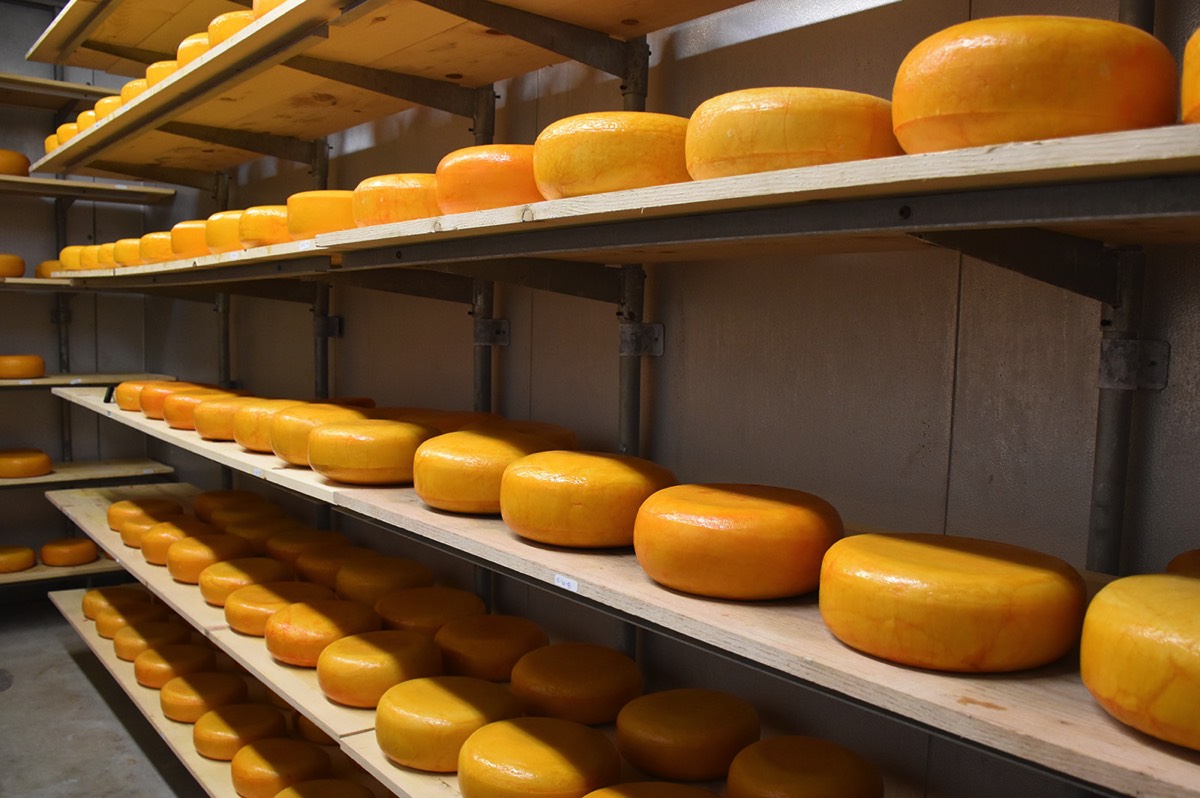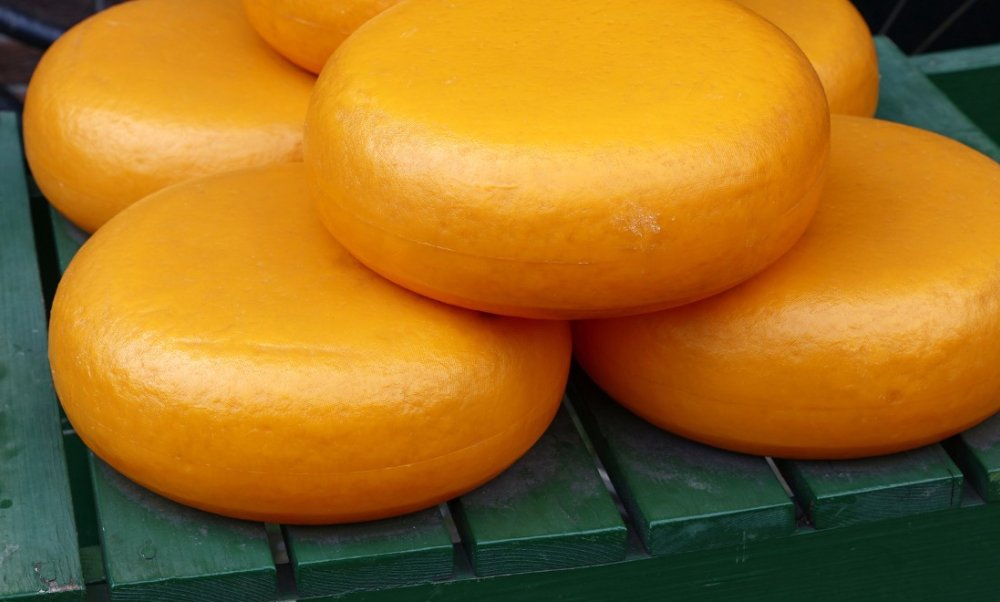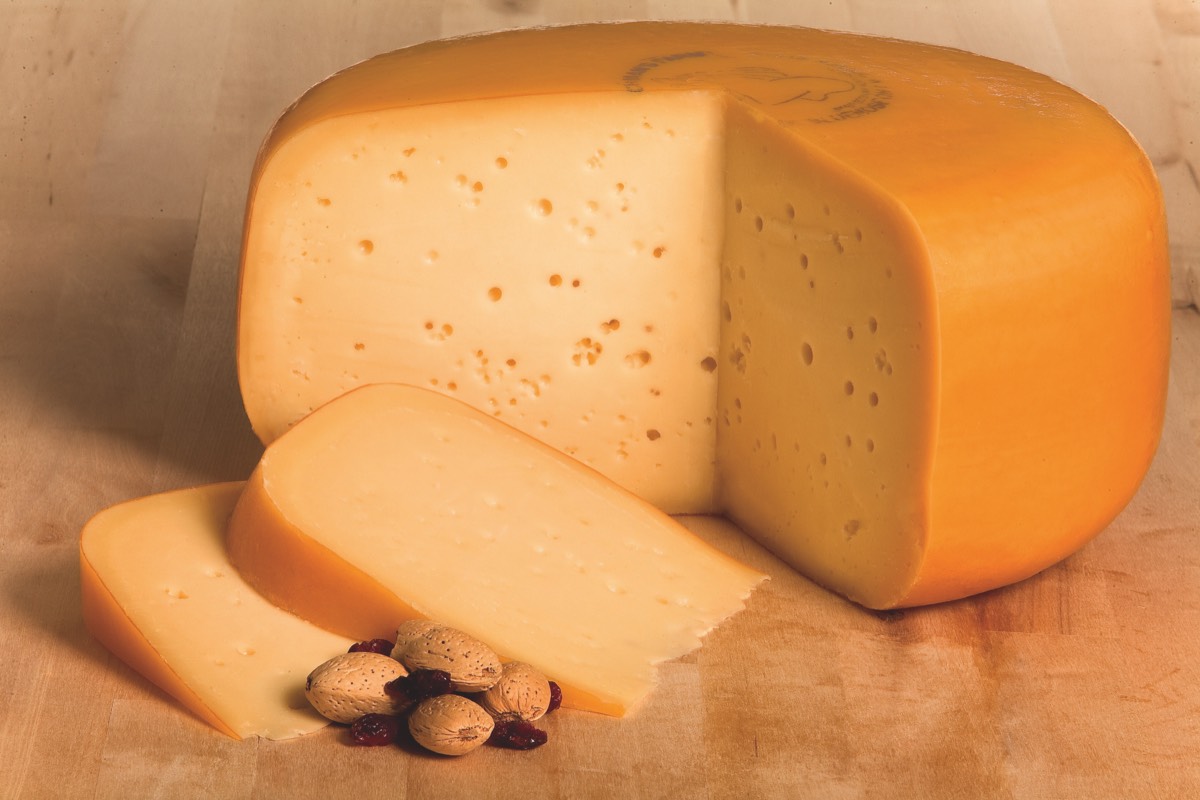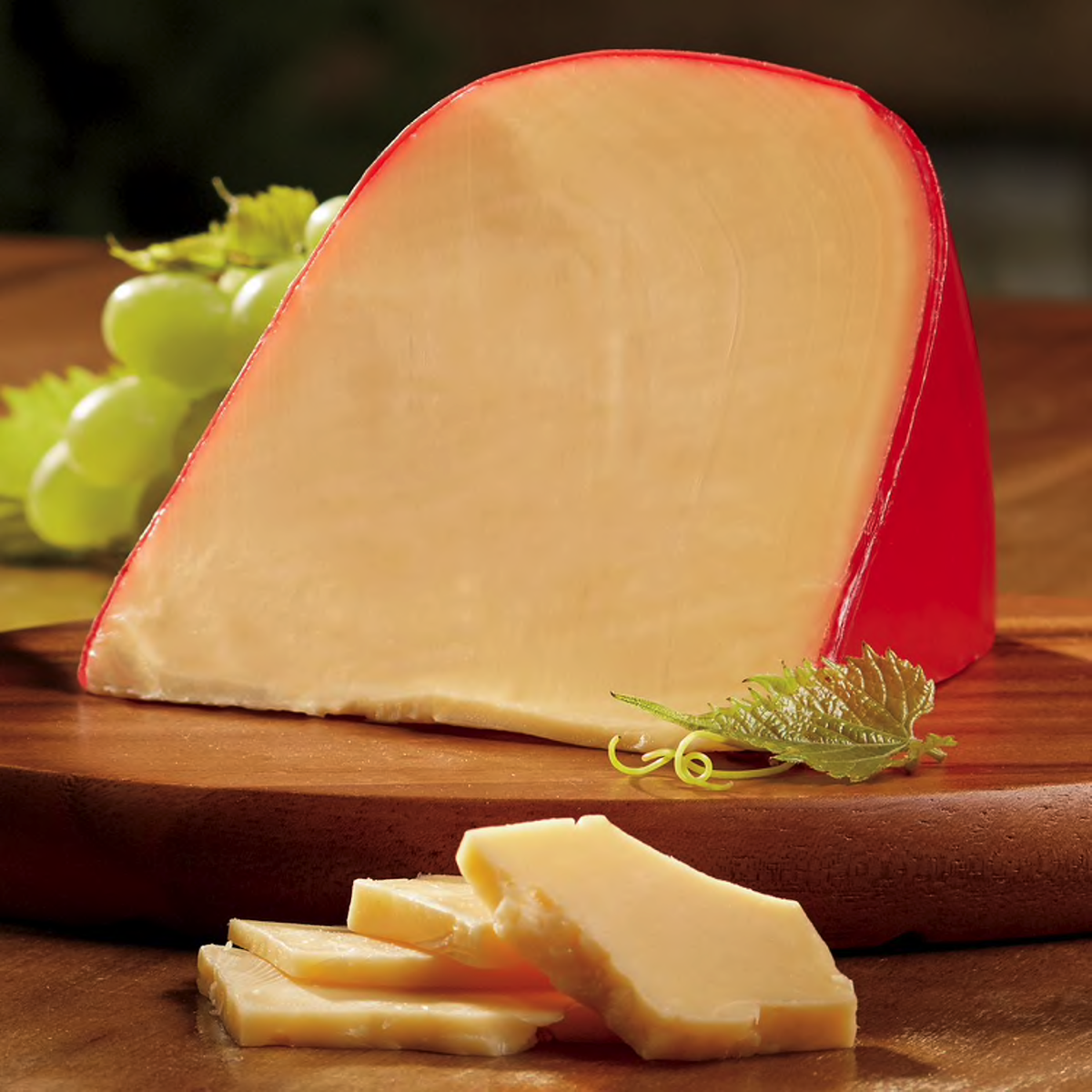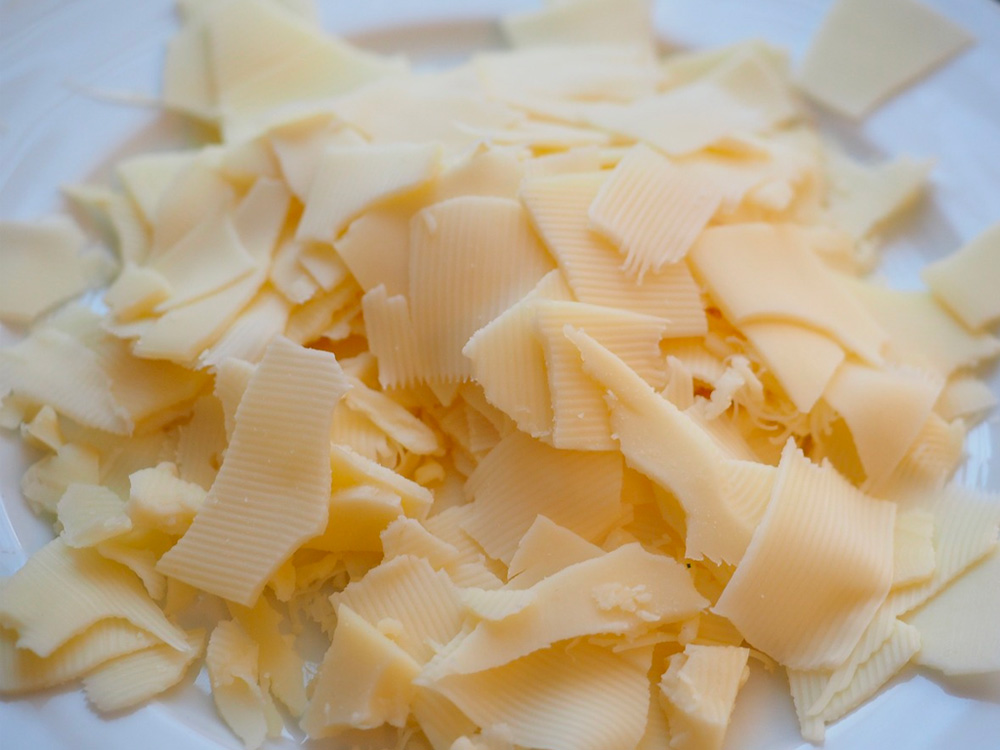Gouda
Cheese
In the Netherlands, cubes of Gouda are often eaten as a snack served with Dutch mustard.
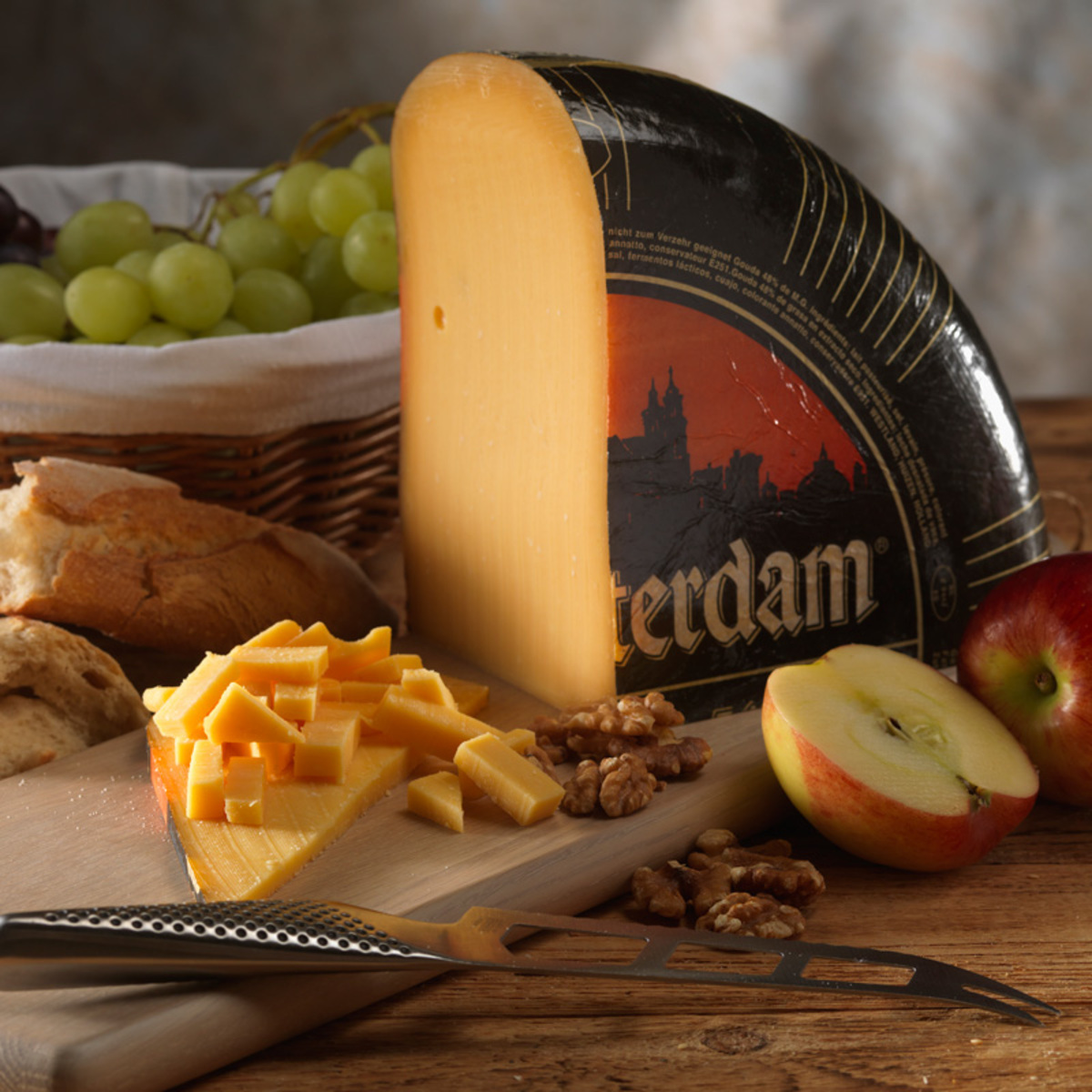
Gouda is a Dutch cheese named after the city of Gouda in the Netherlands. If truth be told, it is one of the most popular cheeses in the world, accounting for 50 to 60% of the world's cheese consumption. It is a semi-hard cheese celebrated for its rich, unique flavor and smooth texture.
The original cheese markets in Gouda is one of the last standing commercial cheese markets in the Netherlands. Since the name is not protected, it has become a generic classification for all cheeses produced and sold under the name Gouda.
HISTORY
The first mention of Gouda cheese dates from 1184, making it one of the oldest recorded cheeses in the world still made today. Cheesemaking traditionally was a woman's task in Dutch culture, with farmers' wives passing their cheesemaking skills on to their daughters. To this day, farmers from the surrounding region gather in Gouda every Thursday morning between 10:00 am and 12:30 pm from June until August to have their cheeses weighed, tasted, and priced. Most Dutch Gouda is now produced industrially. However, some 300 Dutch farmers still produce boerenkaas (“farmers cheese”) which is a protected form of Gouda made in the traditional manner, using unpasteurized milk.
The cheese is named after the city of Gouda, not because it was produced in or around that city, but because it was traded there In the Middle Ages, Dutch cities could obtain certain feudal rights which gave them primacy or a total monopoly on certain goods. Within the County of Holland, Gouda acquired market rights on cheese, the sole right to have a market in which the county's farmers could sell their cheese. All the cheeses would be taken to the market square in Gouda to be sold. Teams consisting of the guild of cheese-porters, identified by distinct differently colored straw hats, carried the farmers' cheeses on barrows, which typically weighed about 16 kg. Buyers then sampled the cheeses and negotiated a price using a ritual system called handjeklap in which buyers and sellers clap each other's hands and shout out prices. Once a price was agreed upon, the porters would carry the cheese to the weighing house and complete the sale.
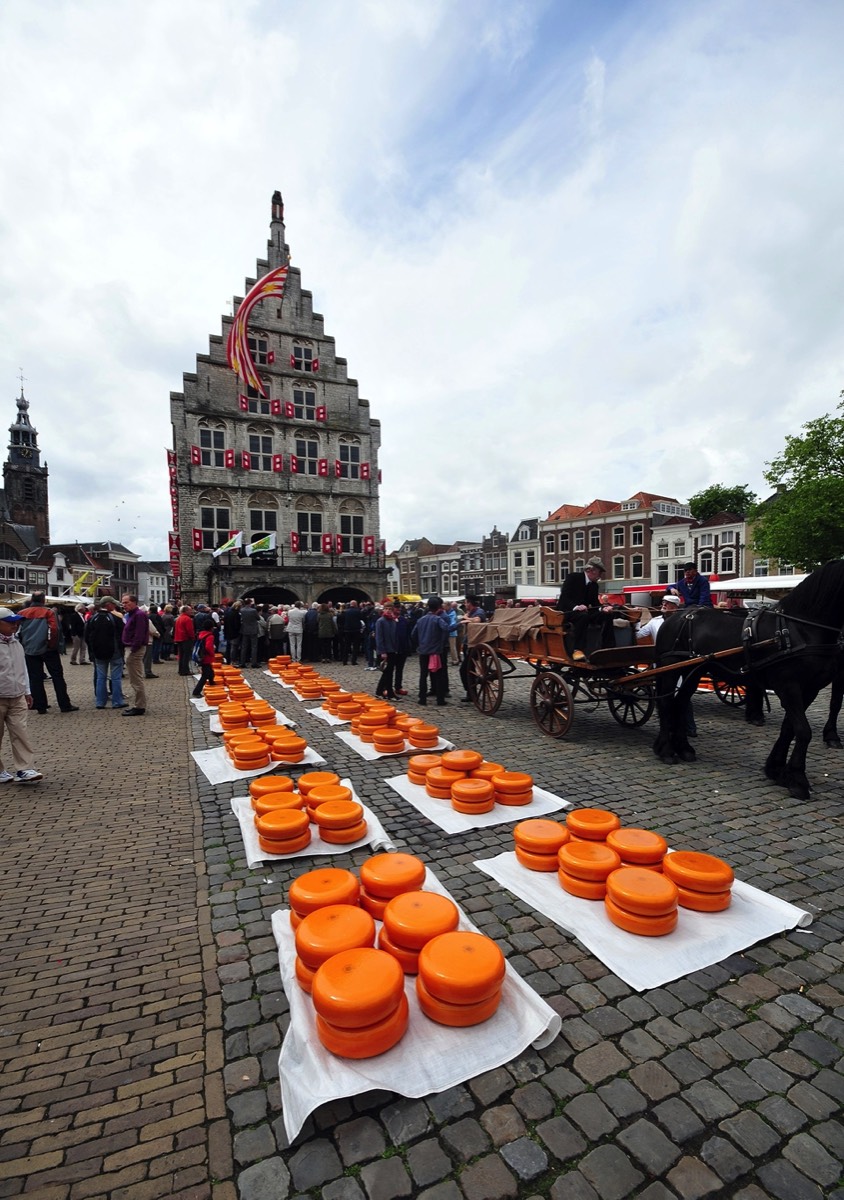
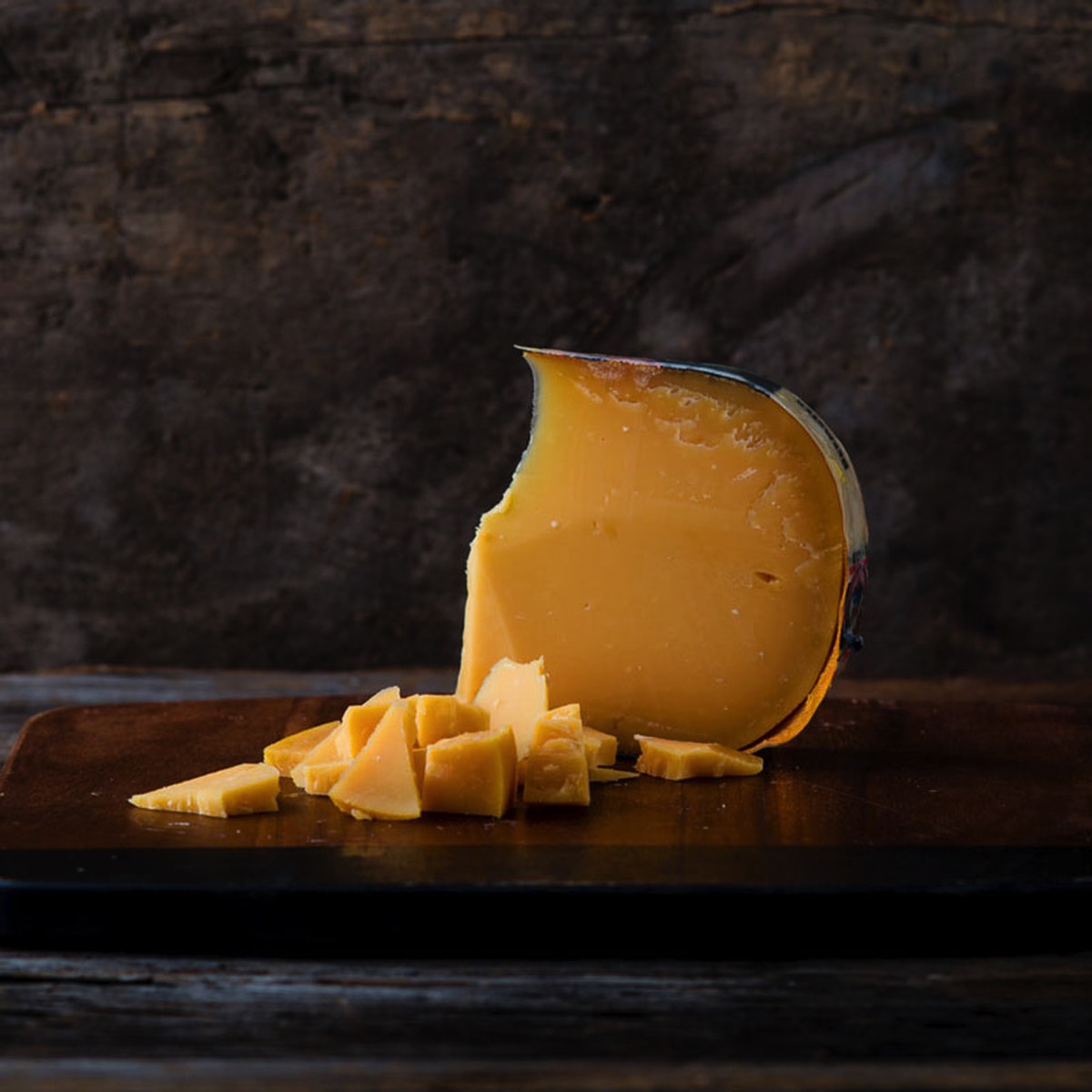
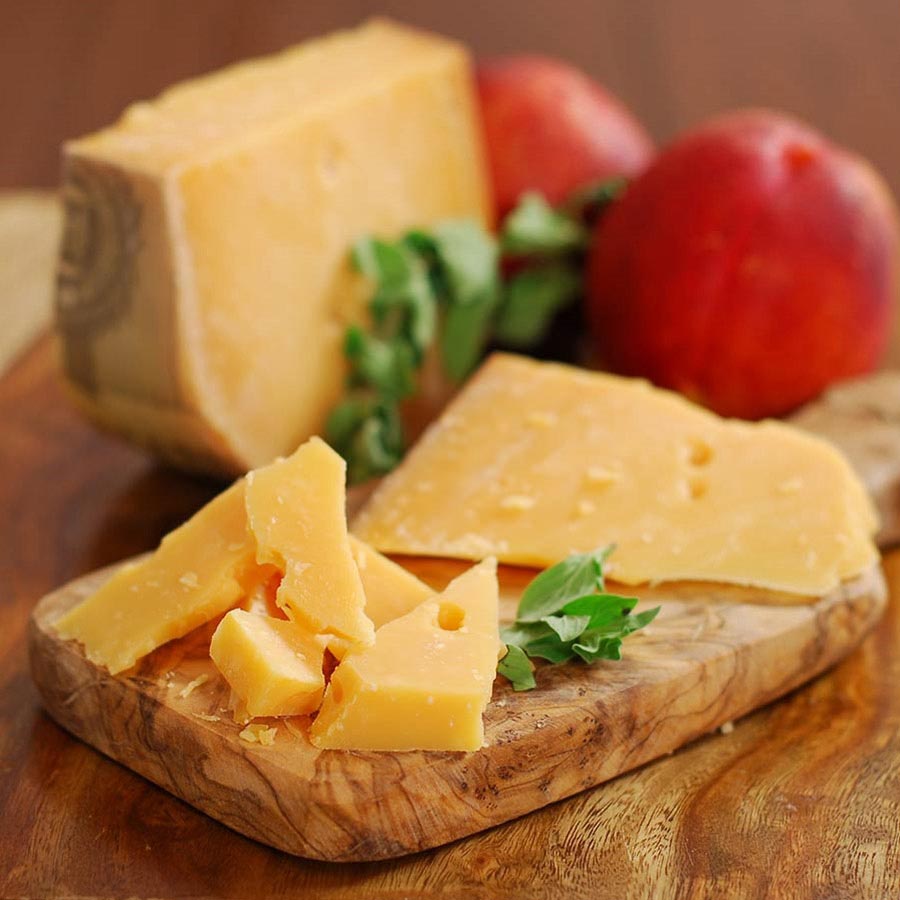
Gouda is typically made from pasteurized cow’s milk although some artisan varieties use sheep’s or goat’s milk to produce cheeses that are going to be aged for a long time. Boerenkaas is a typical variety of unpasteurized Gouda cheese produced by the farmers from the milk of cow's grazing on the natural, low pastures of the Netherlands.
There are seven different types of Gouda cheese, categorized depending on age. Graskaas is young Gouda ready to be consumed within weeks of production. On the other hand, is the extra-aged, Overjarig cheese which has a full-flavored, hard, golden interior and salty flavor reminiscent of toffee. Between the spectrums is a variety of Dutch Gouda’s classified as per the texture and age - Jong, Jong belegen, Belegen, Extra belegen, and Oud. Each cheese gets increasingly firmer in texture and richer in flavor than earlier classification. The waxed rind of the cheese also changes by the age as soft, younger Dutch Gouda cheese are identified by yellow, orange, or red wax rinds white mature cheese have black wax coverings.
Artisans in the Netherlands may produce Dutch Gouda using raw milk as well as pasteurized. To enhance the flavor of the cheese, herbs, seasonings, and nuts may be blended. In the Netherlands, aged Gouda is commonly used to richen soups, sauces. Young Goudas are best paired with beer while medium cheeses taste best when paired with a fruity Riesling or Chenin Blanc. A well-aged Gouda complements wines that are deeply flavored such as a rich Merlot or Shiraz. Gouda cheese may be grated, sliced, cubed or melted. It may be used as a table cheese or dessert cheese.
Gouda is available in large wheels with each weighing between 10 and 25 pounds.
